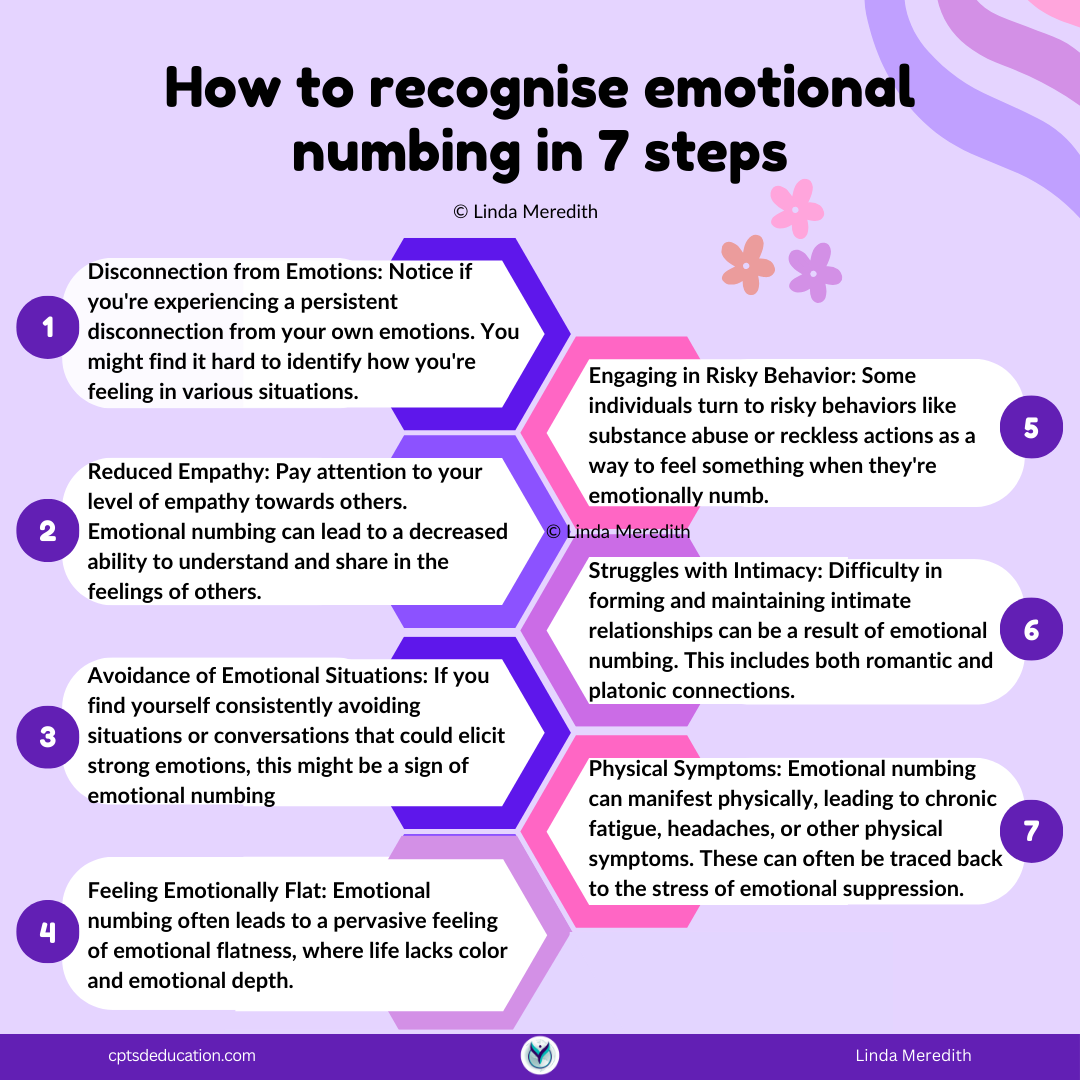Disconnection from Emotions: Notice if you're experiencing a persistent disconnection from your own emotions. You might find it hard to identify how you're feeling in various situations.
Reduced Empathy: Pay attention to your level of empathy towards others. Emotional numbing can lead to a decreased ability to understand and share in the feelings of others.
Avoidance of Emotional Situations: If you find yourself consistently avoiding situations or conversations that could elicit strong emotions, this might be a sign of emotional numbing.
Feeling Emotionally Flat: Emotional numbing often leads to a pervasive feeling of emotional flatness, where life lacks color and emotional depth.
Engaging in Risky Behavior: Some individuals turn to risky behaviors like substance abuse or reckless actions as a way to feel something when they're emotionally numb.
Struggles with Intimacy: Difficulty in forming and maintaining intimate relationships can be a result of emotional numbing. This includes both romantic and platonic connections.
Physical Symptoms: Emotional numbing can manifest physically, leading to chronic fatigue, headaches, or other unexplained physical symptoms. These can often be traced back to the stress of emotional suppression.
Recognizing emotional numbing is an important step towards addressing it and seeking support, whether through complex ptsd coaching, self-help strategies, or other mental health practitioners
Reduced Empathy: Pay attention to your level of empathy towards others. Emotional numbing can lead to a decreased ability to understand and share in the feelings of others.
Avoidance of Emotional Situations: If you find yourself consistently avoiding situations or conversations that could elicit strong emotions, this might be a sign of emotional numbing.
Feeling Emotionally Flat: Emotional numbing often leads to a pervasive feeling of emotional flatness, where life lacks color and emotional depth.
Engaging in Risky Behavior: Some individuals turn to risky behaviors like substance abuse or reckless actions as a way to feel something when they're emotionally numb.
Struggles with Intimacy: Difficulty in forming and maintaining intimate relationships can be a result of emotional numbing. This includes both romantic and platonic connections.
Physical Symptoms: Emotional numbing can manifest physically, leading to chronic fatigue, headaches, or other unexplained physical symptoms. These can often be traced back to the stress of emotional suppression.
Recognizing emotional numbing is an important step towards addressing it and seeking support, whether through complex ptsd coaching, self-help strategies, or other mental health practitioners

Effective. | Complex. | Trauma. | Recovery.
Learn more about complex trauma recovery coaching with Linda. For those taking a proactive approach to recovery and needing answers to help heal their whole self.

